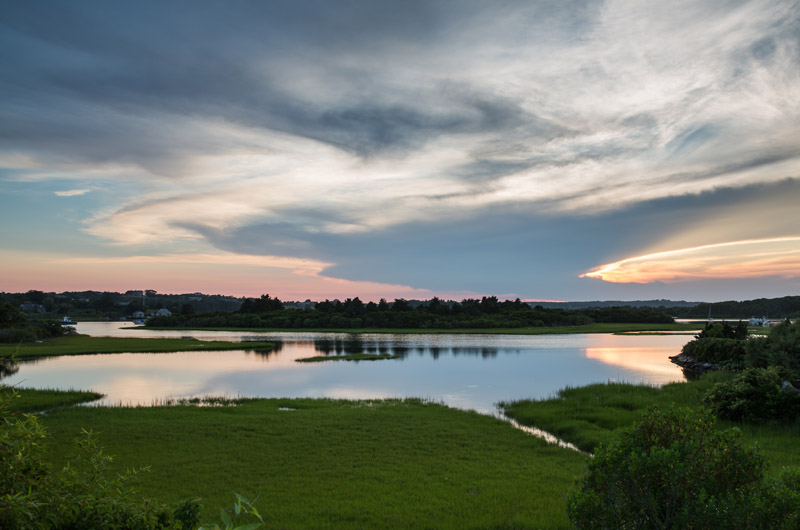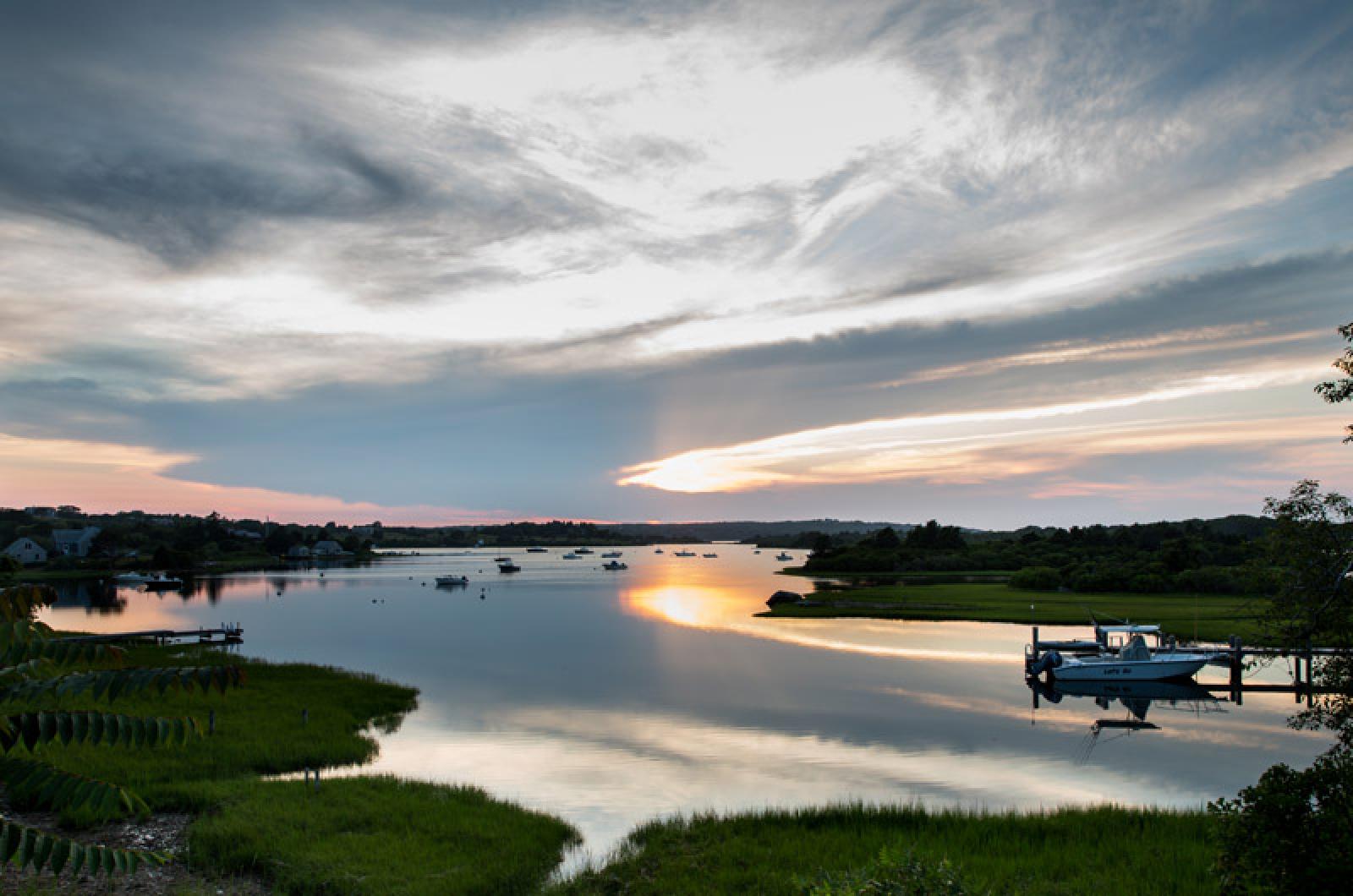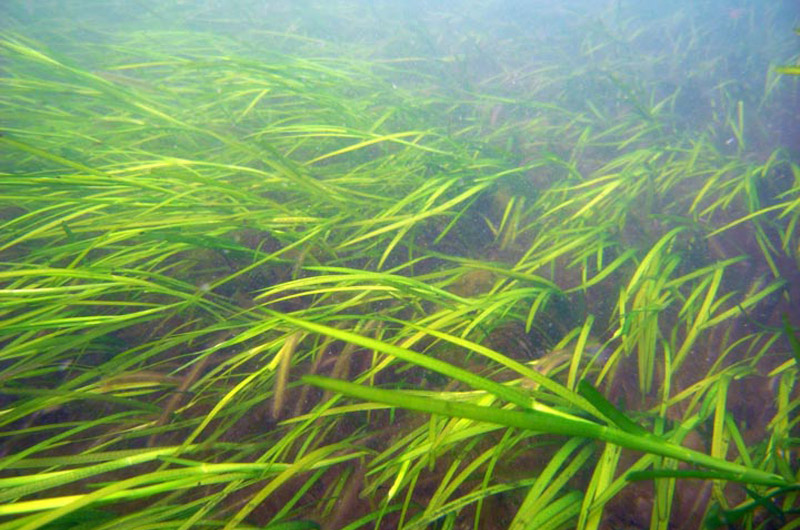An unexpected absence of eelgrass in Nashaquitsa Pond this summer may be the result of crab predation and goose foraging over the winter, during which more than four feet of snow fell on the Vineyard.
Chilmark shellfish constable Isaiah Scheffer said this week that he has never witnessed such a sudden decline in eelgrass, an aquatic plant that plays a vital role in the life cycle of shellfish. The loss seemed even more pronounced in comparison to Menemsha Pond to the north and Stonewall Pond to the south, both of which have maintained healthy eelgrass populations.
Last Thursday, Mr. Scheffer and Phil Colarusso, a marine biologist with the Environmental Protection Agency, investigated all three ponds and confirmed the decline. “I don’t want to say definitively that there’s none, because we didn’t cover every square inch,” Mr. Colarusso said Monday. “But I would say predominantly it’s absent.”
Several factors, including a harsh winter, heavy fishing, and crab and goose activity, appear to have led to the decline, Mr. Scheffer said.
“We found quite a bit of eelgrass just floating on the pond that was shredded at the base,” which indicates the work of green crabs, he said. Some theorize that green crabs cut down the eelgrass in order to reach prey buried in the pond bottom. “We’ve seen that in other areas of New England and in the Northeast where green crabs come in and they mow down entire meadows,” Mr. Colarusso said. “They have a very distinctive shredding of the plant.”
Most of the bay scallops landed in Chilmark last winter came from Nashaquitsa, which may account for the increase in green crabs there to begin with. Mr. Colarusso pointed out that Stonewall Pond, which has less aquaculture, also has fewer crabs and more eelgrass.
While the crabs attacked from below, the geese likely attacked from above. As with green crabs, geese are known to decimate entire meadows. “They are looking for food,” Mr. Colarusso said. “And [with] the winter like the one we just had, you find food wherever you can.”
Eelgrass provides a surface away from bottom-dwelling predators where young scallops can attach and grow. It also supports a variety of other pond organisms, and aids in sediment deposition. It is such an important species that the Massachusetts Estuaries Project uses it as the primary measure of habitat restoration.

“Any time you lose large amounts of eelgrass it’s always a cause for some concern,” Mr. Colarusso said.
The presence of eelgrass in Menemsha and Stonewall ponds seems to rule out the possibility of disease, Mr. Scheffer said. And with plants still thriving to the north and south, Mr. Colarusso believed there was a good chance that seeds would eventually spread and repopulate the area.
Without being sure of a cause, however, he hesitated to recommend increased crab control, which would be costly and labor intensive. (Chilmark already maintains crab traps for that purpose.) But that might be one course of action if the population does not rebound by next spring. Mr. Scheffer added that eelgrass can be propagated by placing male and female plants together in a bag.
Nashaquitsa is home to razor clams, steamers, quahaugs and bay scallops. But Mr. Scheffer’s concern focused mostly on the young scallops that serve as seed for the following year.
“If we don’t have eelgrass we are not going to get the scallop seed sets,” he said.
Already he expected a drop in the upcoming scallop harvest, but not as a result of the loss of eelgrass. “It was just because there were so many adult scallops in the pond last year,” he said. When that happens, there are fewer adults the following year, since scallops usually have a two-year life cycle. Only the adult scallops may be harvested.
The loss of eelgrass will almost certainly affect the ability to collect seed for next year’s harvest, Mr. Scheffer said, but to what extent is still unclear. He expected to know by this fall how much of the seed survived the summer.







Comments (1)
Comments
Comment policy »